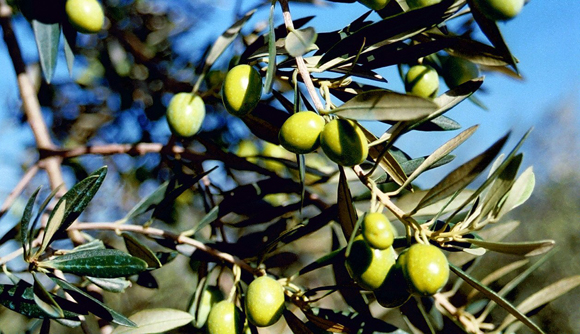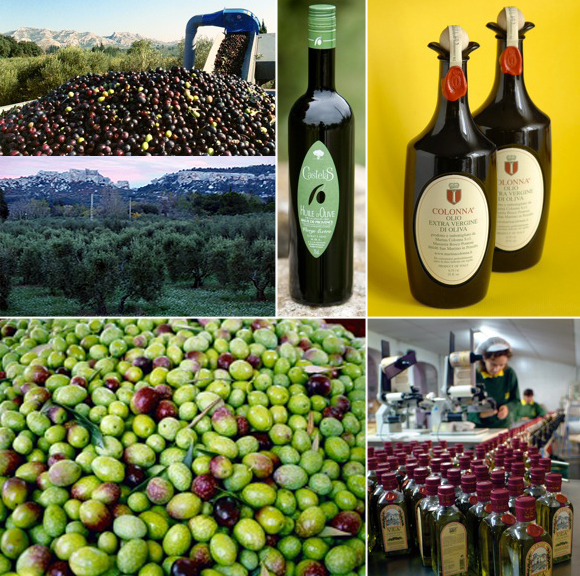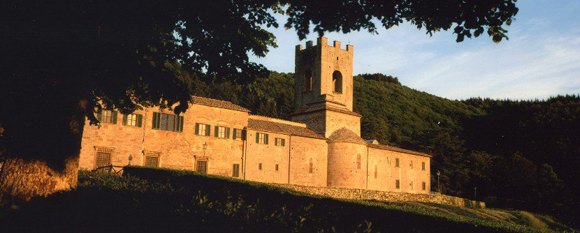
We’re curious and thirsty for olive oil. Thirsty not just for using it in our favorite recipes, but learning more about it. Bill Sanders, an olive oil evangelist at Crush+Press, initially appears to have successfully reached his goal on Kickstarter to start a private label selling quality olive oil in the United States at competitive prices. However, the amount raised is based on a shoestring budget. Ideally, he needs to raise a total of $25-30k. In the following interview, Sanders demystifies olive oil and explains his quest for offering authentic olive oil at affordable prices.

“You can’t connect the dots looking forward; you can only connect them looking backwards. So, you have to trust that the dots will somehow connect in your future.” Steve Jobs (1955-2011)*
When you think about Jobs’ quote, what previous experiences led you to launch a private label for olive oil at competitive prices?
His statement is truthful. My life experiences have led me to where I am today. The private label concept has evolved over 12 years. For many years, I was an olive oil educator as a sideline to my real job. During the holidays in 2008, I offered to conduct olive oil tasting demonstrations at a Williams-Sonoma store in Washington, DC. We were all astounded by the success. This led to launching my own online store in August of 2010, followed by a realization that boutique estate extra virgin olive oils are too expensive for most consumers, thus creating a barrier to higher consumption.
Yet, introducing more Americans to authentic Extra Virgin (EV) olive oil is important given the alarming increase of obesity, diabetes and other diseases, particularly among our children. After all, quality olive oil is a simple, doable lifestyle intervention, but there is another challenge. The lesser expensive olive oil available on supermarket shelves is inferior, defective and flavorless. In essence, the majority of Americans are not getting this nectar’s highly acclaimed benefits.
Next came the epiphany. A close friend, John Lee, who happens to be a marketing genius said to me, “I’m not much of cook, but what I cook should be healthy and tasty. I want a reliable, fresh all-purpose extra virgin olive oil that is the real deal, and my wallet doesn’t scream, ‘Ouch!’ at the checkout counter. By the way, please make the buying decision easy for me. I have no desire, nor the time, to become an expert.” He concluded, “There must be 10 million people like me in the U.S.” The quest began…
What is the purpose of your campaign?
The purpose of the Kickstarter campaign is to raise funds for my own private label Extra Virgin (EV) olive oil. My mission is to provide a healthy, authentic and affordable EV olive oil to more Americans. Funds are needed to acquire product, create brand identity and design a label and begin distributing through multiple channels, from specialty retail to national grocers. In this current economic environment, funding sources for small businesses have become nearly extinct. Thanks to American free enterprise, two young guys in New York City, and not the federal government, devised a creative solution, Kickstarter.com. To borrow from the Guiness ad: “Brilliant!” To learn more about the project, here’s the link to the project: Kickstarter.com/projects/916441295/sanders-private-label-extra-virgin-olive-oilfresh?ref=email
What does first press, extra virgin and cold-pressed olive oils mean?
Unfortunately, these terms offer little help to consumers. Let’s start with “extra virgin.” EV olive oil is the oil extracted from fresh olives using a mechanical process without the use of excessive heat or any form of additives or solvents. This is a natural process, which leaves a vibrant olivey aroma. A key factor in producing quality olive oil is the time it takes to pick the fruit and extract the juice. This should take no longer than 24 hours. For top producers, this process takes much less. Olive oil is not wine. Fermentation is unwanted. Air—oxidation—is an enemy of olive oil. Hopefully, the USDA certification will add meaning to the term, “extra virgin.” California, the champion of these regulations, has an excellent EV certification.
“Cold Press” is an obsolete term. Many producers are removing the term from the label. Olives are seldom pressed. A high-speed centrifuge is used to spin the fruit to separate the oil from the paste. Perhaps, we should create a new term: “First or Cold Spin.”
The term “First Press” refers to olive oil produced from first extraction, while “virgin” and “refined” olive oils are produced from subsequent extraction processes from the same fruit. First Press means little, however, if the fruit hasn’t been cared for properly.
What are the problems with the olive oil market in the United States?
The problem is too much defective olive oil coming into the U.S from European-based industrial bottling companies. A University California – Davis report released in April found that 73% of the samples from the five top selling olive oils in the U.S failed to meet the minimum standards for EV olive oil. Sadly, many of these companies are blending older or adulterated oil with fresher oil to improve the chemistry and slapping an Extra Virgin label on the bottle and shipping to the U.S. These mass produced olive oils are merely fat and have little or no juice component. The presence of polyphenol antioxidants—the healthy stuff—is minimal. Consumers are denied the benefits of authentic extra virgin olive oil. There’s good news. Recently, new minimum standards from the USDA for EV olive oil became effective. Although the new standards are voluntary, the new USDA certification is a positive step.
What are the major regional varietals of olive oil and their taste characteristics, and which region in the world is currently trending in olive oil?
The World Catalog of Olive Varieties features 139 varieties from 23 olive-growing countries that account for almost 85% of olive acreage. Olive varieties (usually referred to as cultivars) have not caught on like grape varieties for wine. Similar to wine, flavor styles of varieties are heavily influenced by climate and production philosophy.
The classics are the Tuscan varietals of Frantoia, Leccino, Moraiolo, and Pendolino. These Tuscan blends produce robust, peppery olive oils, which can also be attributed to early harvesting to avoid the frost.Yet, these same varietals grown nearer to the sea, such as Lucca, produce a milder flavor. Coratina from Southern Italy provides a tasty, robust style. In contrast, Taggiasca from Liguria in the north produces a buttery, mild tasting oil mirroring the cuisine of the region.
It’s no coincidence these buttery, mild flavored oils carry over to the South of France with their blends of Aglandau, Grossane, Salonenque, and Picholine. Production philosophy, however, can factor in. Jean-Benoît Hugues of Castelas in Les Baux de Provence produces a robust and atypical olive oil from the South of France. He adds no water during the extraction process. The only water comes from the fruit itself through irrigation. The result is big time olive flavor.
Spain’s Arbequina (medium spicy) is growing in popularity in California, Argentina and Chile. I’ve always felt Koroneiki from Greece fits American taste, and complements lighter, California style cuisine. Two outstanding varieties from Tunisia, Chétoui and Oueslati, should be on your watch list.
Up and coming olive oil regions are Australia, Argentine, California, Chile, South Africa, and Tunisia. All are proving to be able challengers to the traditional Mediterranean producing countries. Exploring the world of olive oil is fun.

When crowdsourcing questions about olive oil, most people ask how to pair the right olive oil with different cuisines. What would you suggest?
When speaking to consumers, I attempt to keep the pairing thing simple. As with wine, we seem to make things more difficult than they need to be. Most importantly seek fresh olive oil. Here are some guidelines (not rules). Match mellow oils with lighter cuisine and hearty dishes with robust, spicy olive oils. Contrasting flavors work, too. For example, robust EV drizzled over fresh tomatoes, mozzarella and basil (caprese) is outstanding. Given fall has arrived, garnish your pumpkin and butternut squash soups with olive oil. The monounsaturated fat will help the body absorb the healthy carotenes of the soup.
What is the proper method to tasting olive oil?
Tasting is best demonstrated by drinking the nectar straight out of a cup or spoon. The process is similar to wine. Swirl in a cup, sniff (3 short sniffs, followed by a long one), taste, slush vigorously, and as you swallow breathe through your teeth. You will measure fruitiness (aroma), bitterness on the tongue and pungency or peppery sensation in the back of the throat. Causing a little cough is a plus. Don’t be afraid of bitter and pungency. This is an indication of freshness and quality. Olive oil should have some zip and zing. This spiciness is the antioxidants that make premium EV healthy, extending shelf life, and raising the smoke point for cooking.
What’s your favorite recipe demonstrating the taste of olive oil?
Rather than a specific recipe, I’ll offer a technique. I drizzle or finish with a little EV olive oil on about everything. Try this with a grilled steak. After removing the meat from the grill, finish with a squeeze of fresh lemon, sea salt and a quality EV olive oil. The freshness of the condiments adds a zesty contrast to the caramelization.
Does EV olive oil have a low smoke point, thus requiring caution when cooking?
There’s a lot of misinformation circulating about cooking with EV olive oil. Most discussions about cooking with EV olive oil make the faulty assumption that all EV olive oils are the same. It is true that some EV olive oils have a low smoke point. This is the cheap and inferior stuff, which has higher acidity due to oxidation and other factors. The higher the acidity, the lower the smoke point is the rule. Better quality EV with the pungency mentioned earlier has lower acidity, thus a higher smoke point. The difference can be as much as 75 degrees. Most top EV should have a smoke point of about 410 degrees, but every bottle is different and will continue to change after the bottle is open. For cooking, I use Frantoia, a mid-priced olive oil from Sicily. It has an excellent shelf life.
For most home cooks, cooking with EV is not an issue. After heating your pan, add the oil, followed by your ingredients. The food will immediately lower the temperature. Caution–Don’t step away from the pan when heating the oil. For extremely high heat cooking such as roasting red snapper, Grapeseed oil is an option.
For more details, there’s excellent reading from a highly respected olive oil researcher in Australia, Richard Gawel, The Smoke Point of Extra Virgin Olive: The Whole Story.
Have additional questions about olive oil? Leave it in the comment section below.
Thank you, Bill Sanders, for taking the time to discuss olive oil. Pledge your support for his Kickstarter campaign by clicking here. To learn more about olive oil, visit his blog at CrushAndPress.com, and it’s a good source for ordering quality olive oil online. In addition, follow him on Facebook/CrushandPress and Twitter @CrushAndPress.
*Source: Mourning a Tech Legend, New York Post, page 4. Thursday, October 6, 2011
April 2018 Update: Press and Crush is no longer in business.
Great interview, Sanura. Like The Good Soup said, it answered a lot of questions, even I didn’t know or consider in finding out answers to. I definitely taste olive by the teaspoon to decipher what’s appropriate to use in what, but as far as the swirling as we do with wine, is news to me. As for kickstart, I’ve heard of it, but not completely familiar. So, in all fairness to Mr. Sanders but in consideration of what Madeyln poses, I do feel like it’s important to discuss and explain how a $50 bottle of EV olive oil comes close to being affordable.
What a great resource for olive oil. I didn’t have much knowledge of it so it was a fun read! 🙂
Hi Karma Free Cooking, Thank you for your thoughtful comment. Your point is absolutely valid. I have at least a partial solution to our mathematical gap. First rewards to backers present a delicate balance for any Kickstarter project. How can you provide value to those who pledge, while retaining sufficient resources from the project to execute the business plan at a quality level, i.e.,acquire product, develop brand identity, label design, marketing, etc.? After all, Kickstarter is a unique alternative to seed money from friends and family for small businesses, not a traditional consumer transaction. For a $50 pledge, the objective is to provide the backer with value without overly absorbing your net cash flow after paying Kickstarter and Amazon fees. My challenge has been managing shipping costs. Because the olive oil will not be available until March or early spring, the Tunisian olive wood items were added as a reward to be delivered in December prior to the holidays. Thus two shipping events are required. You have, however, accurately pointed out a disconnect within the backer levels, and an unfairness to those outside the pick up regions.
Here’s a solution, or at least a partial solution. I’ve added a reward level at $65. You will receive a bottle of olive oil and the Tunisian olive wood items. These will be shipped at no no further expense anywhere in the U.S and its territories. To balance the levels, one bottle of olive oil will be added to those already stated at the $100/$101 levels. I know this doesn’t completely close your mathematical gap, but hopefully this offers more value and still provides the project with sufficient cash resources to bring this olive oil to market successfully.
For your time and effort reviewing the project and sharing your concern, I’ll send you an additional bottle at the $65 level. If you choose not to pledge, I’ll gladly send you a bottle at my expense. I want you to taste my olive oil. Please send me your shipping address at bill@crushandpress.com Thank you.
Sanura, what a completely fascinating interview. It’s answered so many questions I’ve had about olive oil. Just the sort of interview I like to read!
I totally support local farmers and CSAs, but the way this KickStart campaign is set up kind of benefits the grower/producer more than it does the consumer/supporters. If I lived in KY or DC it may make sense… maybe. But when someone starts the premise stating that good olive oil is expensive and that paying $18-$50 a bottle is exhorbitant for many, this Kickstart cost structure makes little sense to me.
If I did my math correctly, here people are paying about $50 a bottle if they’re able to pick it up in KY or DC. How is this providing a hi-quality but CHEAPER alternative to consumers??? Am I missing something here??? If you pledge less than $50 you don’t even get to taste the oil.
please help me understand…